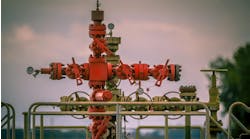To maximize return on assets (ROA), a manufacturing-centric company should optimize not only its production plants, but also its enterprise and supply chain domains. This approach holds true for continuous, batch and hybrid manufacturing processes in the chemical industry.
Manufacturers used to be satisfied when control loops were properly tuned, recipes and phases ran in proper order, and products were produced to their required quality specifications. With today's global environment, increased competition and the need for custom products, production and supply chain optimization are becoming increasingly important.
It is no longer sufficient for an enterprise to have islands of automation along with isolated supply chains. To maximize profitability, chemical manufacturing plants and supply chains need to work together closely in an optimized fashion. In this new environment, manufacturing will continue to maintain its central role, but enterprise-wide optimization of production facilities and supply chains is going to be increasingly important for maintaining the bottom line.
Production plant optimization
Facilities to optimize continuous processes ," based on rigorous mathematical and empirical models ," have been in use in the chemical industry for quite some time. However, these techniques are somewhat limited in their applicability to batch production. Many manufacturers, however, have found rule-based techniques to optimize their batch production processes.
In a typical manufacturing environment, different models are used for production design, optimization, operator training and execution. Significant efforts are required for building these models. These models need to be unified into a single model or be transformed from one to another without significant efforts.
It is not difficult to envision how integrated simulation and design tools can significantly shorten a product introduction cycle. These tools could be worth millions of dollars per day to a company trying to compete in the market with a new product.
Enterprise-wide optimization
An enterprise needs to understand its manufacturing requirements, its business needs and the relationship between them before it can create a viable integration strategy. The information exchange between business and automation systems can range from simple production schedules to elaborate quality, inventory and production management instructions.
The amount and type of information that a business system will need from the control system also can vary widely ," from process values only to information about alarms, quality, operator actions, production records and materials movement. The amount of information exchanged will determine the degree of integration and synchronization required between the automation and business systems.
Cultural gaps between control and business management are a major problem in many organizations. Effective integration of these two worlds requires significant technical, educational and planning efforts.
The "General and Site Recipe" concepts in the American National Standards Institute/Instrumentation, Systems and Automation Society (ANSI/ISA) 88 and International Electrotechnical Commission (IEC) 61512 batch control standards and the enterprise-control system integration outlined in the ANSI/ISA-95 standard conceptually help the integration, while XML and component technology are the main enablers. Today, most integration of automation and enterprise resource planning systems tends to be accomplished on a custom basis to solve specific problems. However, standard integration products are emerging.
Supply chain optimization
Understanding supply chain types is an important step in supply chain optimization. For some industries, the critical constraints likely are to be found in procurement. For others, it is manufacturing or distribution. Chemical and pharmaceutical industries fall between the manufacturing-intensive and distribution-intensive areas. Therefore, these enterprises generally require optimization in both the manufacturing and distribution areas.
With Internet technology as the primary enabler, significant improvements in the supply chain are taking place. Manufacturers and suppliers alike are introducing portals and business-to-business exchanges that can be used to market and procure all types of goods and services.
The next change, which is already underway among leading manufacturers, is to align with one of the emerging industry-specific exchanges to procure raw materials and intermediates in the most efficient fashion. The end result is that the Internet is emerging as the great equalizer, leveling the playing field of competing suppliers and giving manufacturing companies greater visibility and control over the procurement process. This technology should result in significant reductions in the price of purchased goods.
Chemical manufacturers need to broaden their optimization scope to include the enterprise and supply chain. To ease this process, they might want to collaborate with process automation and business management system suppliers.
Ghosh is a vice president of ARC Advisory Group, Dedham, Mass. He can be reached at [email protected].

